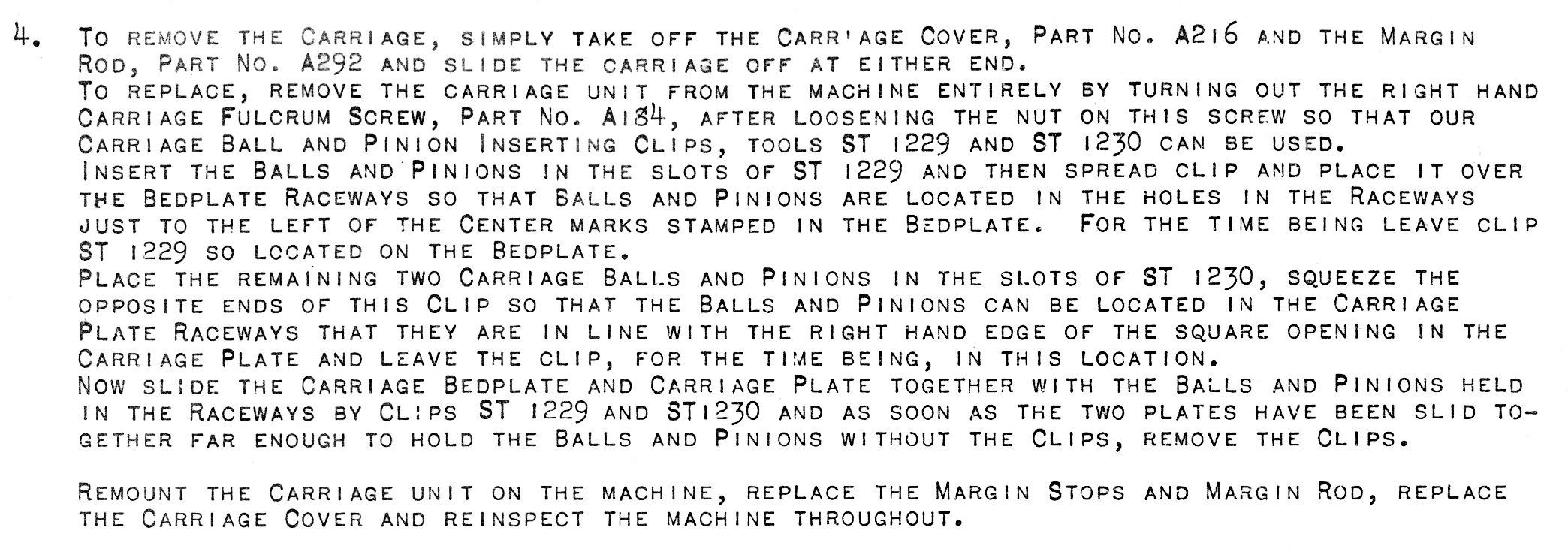There is a clear delineation between pre-WWII service instructions for typewriters and Post WWII service manuals. Prior to WWII, it was expected that the typewriter mechanic would be an apprentice to an experienced mechanic, or would have come out of factory training or even working for a time for a typewriter manufacturer before striking off to start their own shop.
After WWII, the expectations were very different – C.L. “Rocky” Jones had changed the expectations by writing the US Army manual for typewriter repair in the style that is seen in all of the post-war service manuals; heavily illustrated and worded so that your average ex-farmboy G.I. could follow it. He also organized the Army’s Office Machine Repair services and after the war ended, started the O.A.M.I. training schools to train all of those newly discharged soldiers waving their G.I. Bill money around.
In fact, it’s *very* difficult to find pre-war service manuals for typewriters – they probably weren’t sold often to those very experienced repairmen, nor were they targeted to people who *weren’t* experienced repairmen. You can see the difference very strikingly if you have the Floating Shift Bible. The first part was written pre-war for the Series 1-4 Floating Shift machines, and is a wall of text that takes some serious dedication to decipher. Then you get to the post-war Series 5 manual, and every page has pictures and callouts and clearly worded instructions. It’s night & day, the difference.
So anyway, from the collection of Kirk over at Nashville Typewriter, here’s a prime example of the pre-WWII style of service manual. Note that this text expects you to have access to the Zephyr Parts manual if you want illustrations.
Oh, I should mention that Corona had a part number for the sheet of cardboard you’d use to press down the top row of keys before removing the shell of the Zephyr: Part No. ST1243, and it cost 25 cents. :D
I think the very first sentence in the manual sums up the attitude as basically: “This machine is so simple that we think we shouldn’t even need to explain it at all to you smart fellers!”
Then they proceed to explain it step by step in excruciating, yet very chummy detail. In many places, they point out quirks and “tricky bits” specific to the design and explain the workarounds that they have come up with. I love it, but it is dense, and a very different read from say the 1960’s & 70’s 5Y and 6Y manuals. Enjoy!











Thank you! I have a ’38 and am a smart enough feller who figured it all out, but it’s still nice to have this tucked away with the typewriter. Many thanks to Kirk too!
I’ll take one keyboard depressor, I’ll send you a quarter! I used a piece of cardboard when I worked on mine, now I feel silly that there was a real tool for this all along.
Brian, best comment ever!
When I worked part-time at a church in Atchison, KS, in the early 1980s, there was an elderly member of the congregation, a Mr. Morris. Mr. Morris was the owner of Morris Typewriter. I asked him how he came to be in the typewriter business. He said he was going to some kind of business school in Atchison, and this must’ve been years and years ago. Anyway a typewriter used at the school broke down. Mr. Morris told someone at the school, “I think I can fix it.” And he did. His typewriter repair business started from that, and I assume he was self-taught. Now I really wish I’d taken the time to get to know Mr. Morris better–but he was a good guy.
and here also is an example of the use of Double Gothic typeface in technical manuals. (: